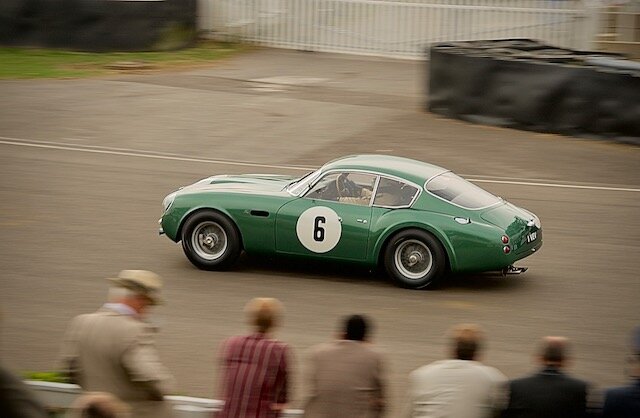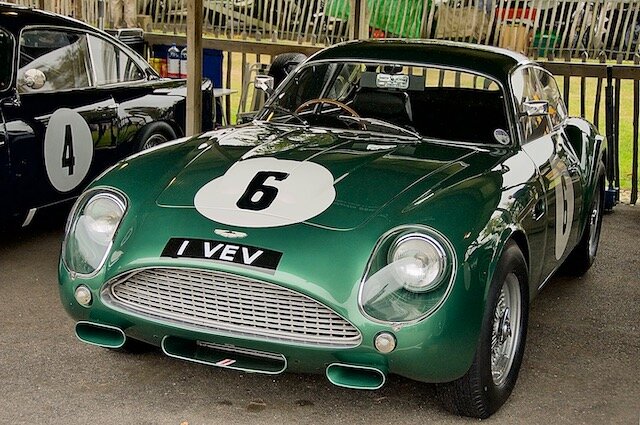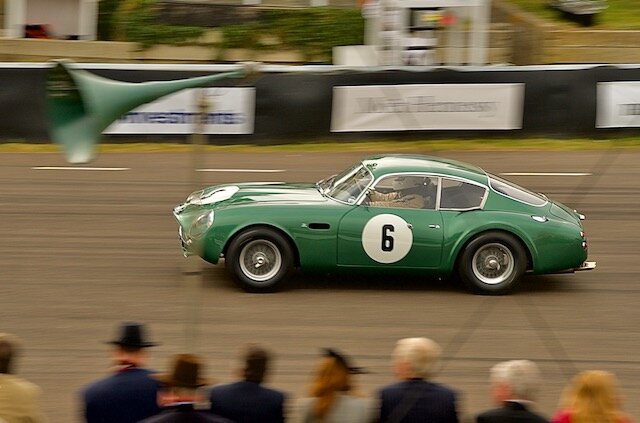Aston Martin finally won at Le Mans in 1959 with the DBR1, after a number of years trying and at considerable cost. In the second half of the 1950s the popularity of 2-door Grand Touring or GT cars was increasing considerably and this was extending into racing as well. A GT class was also introduced in the Le Mans 24 Hours from 1959. Aston Martin had launched the DB4 in 1958, drawing heavily on its racing expertise such that the car sported disc brakes and independent front suspension and were also available with a lightweight (“superleggera”) body. This all made it logical for Aston to reduce its commitment to the costly racing programme that had spawned the DBR1 and instead focus on the new GT class, continuing its exposure to racing but with a more commercial focus. The GT version of the DB4 was launched in 1959 with a stripped out interior to save weight, a shorter wheelbase and a lighter body, plus a scooped bonnet covering a new more powerful 3.6 litre engine increasing power to just over 300bhp. Unfortunately, Ferrari had just launched a new short wheel base version of the 250GT which had a smaller engine but was much lighter and more agile than the Astons, so frequently beating them. To try and counter this and improve the performance of the DB4GT, Aston Martin turned to the Milan based coach builder, Zagato, who had demonstrable experience with Alfa Romeo and Lancia in slimming down their race cars. Ercole Spada, a new young talent at Zagato, was given responsibility for the the project and produced a body shape which is acknowledged for its clean attractiveness. Unfortunately, he had less success in reducing the weight of the car and in an attempt to compensate the engine was developed to give a higher power output of some 314bhp. As Aston advanced its designs, inevitably so did Ferrari with their 250 GTs by then putting out 285 bhp in cars that were still 25% lighter than the Zagato Aston Martins. Jaguar had also introduced its new lightweight version of the E-type, which scored a victory in its maiden race. The net result of all this was whilst the Zagatos and ‘standard’ DB4GTs are beautiful and highly desirable for collectors today, they only ever scored a limited number of wins and in racing terms were less successful than their reputation would suggest. In the three years of production, Aston Martin made just less than 100 DB4GTs, of which 19 were equipped with Zagato bodies and of those four were road going rather than race versions. None of the original Zagatos are exactly identical. Two of the most famous original racing Zagatos are known from their registration numbers as “1 VEV” and “2 VEV”, the first of which is pictured here. Both cars raced in John Ogier's Essex Racing Stable team with factory support from Aston Martin and both competed in the 1961 24 Hours of Le Mans. Unfortunately neither car finished (1 VEV due to head gasket failure), but in July 1961 2 VEV beat a Jaguar E-type on the last lap to take the British Grand Prix GT support race. 1 VEV’s greatest moment was in the hands of Roy Salvadori at Goodwood in the 1961 Tourist Trophy, when it was pipped for second place by a Ferrari 250GT driven by Mike Parke. The car was hard on tires and in the 420km race went through 14 new ones. In 2007, the car was completely restored. It sold at auction for £1.54 million in 1990, but 2 VEV sold for over £10 million in 2018, illustrating the desirability of these cars today.






